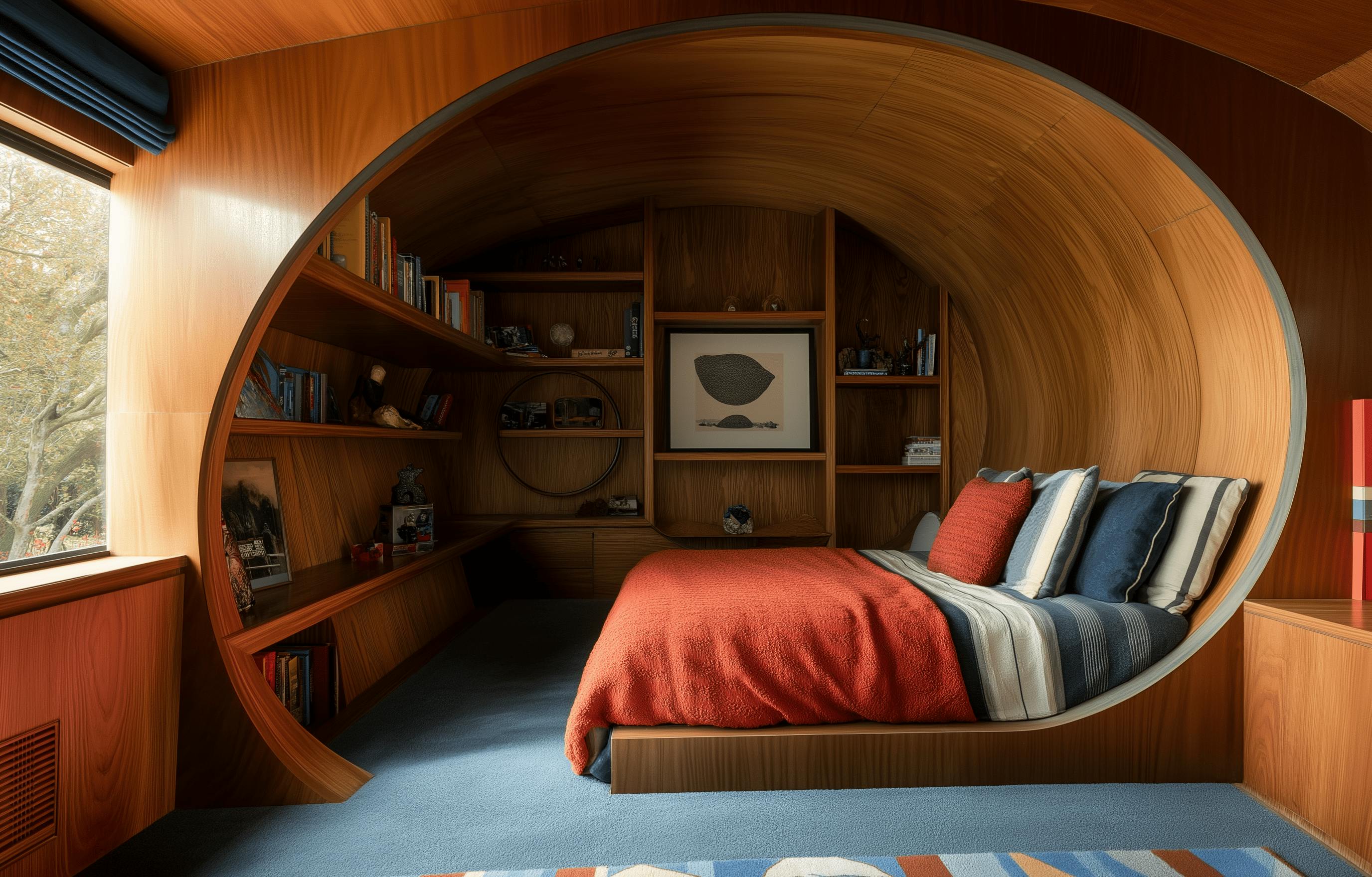The story of modern interior design is one of rebellion and transformation. Emerging in the late 19th century, it challenged the excessive ornamentation and artificiality that dominated Victorian-era aesthetics. This flourishing movement, fueled by the Arts and Crafts movement, was a clarion call for a return to simplicity and functionality.
By the 1930s, modernism blossomed into a full-fledged design philosophy, spearheaded by visionary architects and designers like Le Corbusier, Charles and Ray Eames, and Florence Knoll.
Scandinavian and German Bauhaus design principles deeply influenced its evolution with their emphasis on clean lines, geometric shapes, and a seamless balance of form and function.
Its emphasis on functionality was deeply rooted in the socio-economic realities of the time. The Industrial Revolution had ushered in an era of mass production and urban living. Homes needed to be adaptable and efficient, catering to the fast-paced lives of their inhabitants.
The industrial boom itself played a significant role in shaping modern interior design. New materials like reinforced concrete and steel became readily available, allowing for cost-effective construction. These advancements, in turn, facilitated the creation of buildings with expansive windows, flat roofs, and bold, geometric forms – a stark departure from the traditional.
Modern interior design, however, was not a monolithic entity. Influenced by Art Deco, De Stijl, and Bauhaus, it evolved from the late 1800s to the 20th century, remaining dynamic despite the rise of postmodernism in the 1970s.








